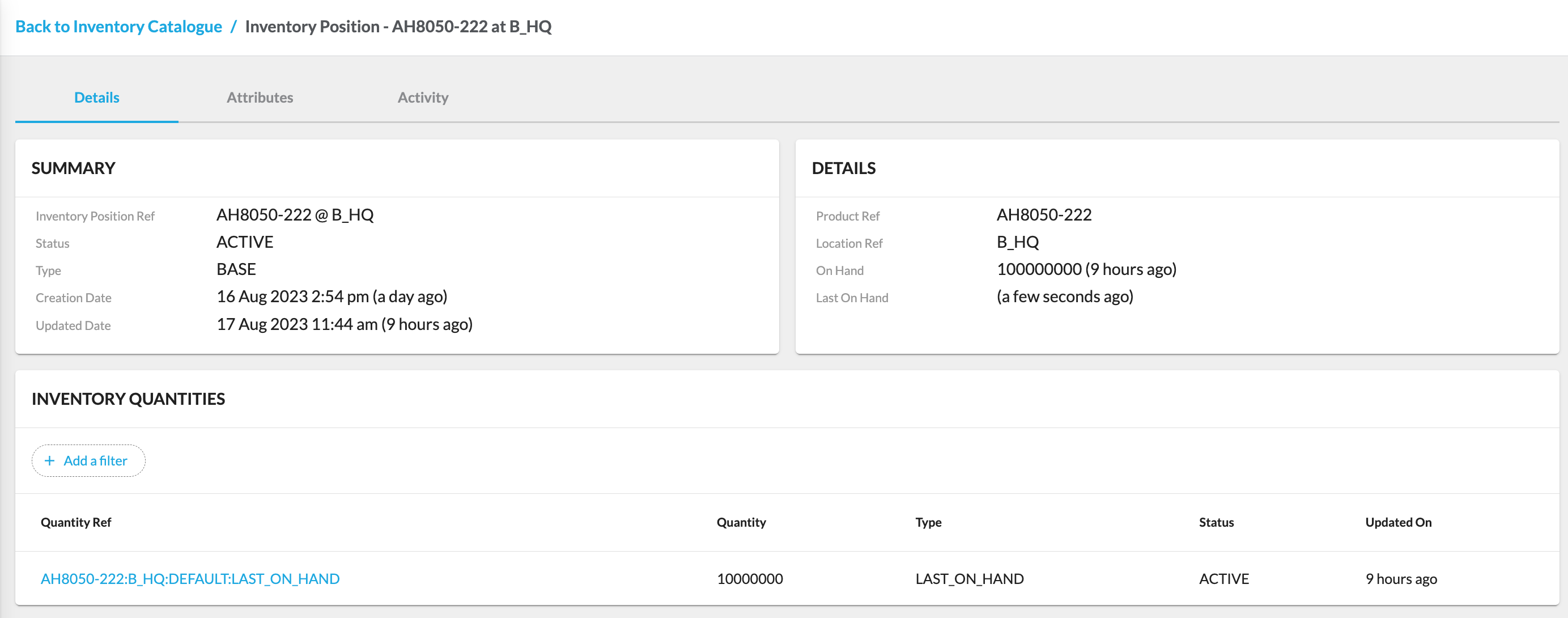Inventory Interface
Intended Audience:
Business User
Author:
Fluent Commerce
Changed on:
29 Aug 2025
Overview
The Inventory interface of the Fluent Web app provides comprehensive inventory management capabilities:
- Inventory visibility
- Inventory allocation
- The total quantity of stock for a specific item (stock on hand(SOH)) and the status of that inventory
- Available to promise inventory levels
- Inventory buffers to reduce overselling of products
Key points
- The Fluent Web app's Inventory interface offers a comprehensive suite of capabilities, including inventory visibility, allocation, total stock quantity (stock on hand), inventory status, available-to-promise levels, and strategically implemented buffers to prevent product overselling.
- The interface is equipped with various configurations, such as Inventory Catalogues, Control Groups, Virtual Catalogues, Cross-Catalogue Views, and Location Inventory Views, providing users with versatile tools to tailor their inventory management approach according to specific business needs and scenarios.
The interface contains the following configurations:
- Inventory Catalogues
- Control Groups
- Virtual Catalogues
- Cross-Catalogue Views
- Location Inventory Views
Inventory Catalogues
An Inventory Catalogue consists of inventory positions that can be aggregated from multiple sources. Inventory catalogues hold stock on hand (SOH) of products, variants, and groups. The Inventory Catalogues configuration allows users to create and manage inventory catalogues.
Inventory Catalogue configuration contains the list of inventory catalogues for a particular retailer. Clicking `Catalogue Ref` opens the Inventory Catalogue Details page, which displays detailed information.





Control Groups
Control Groups manage buffers and safety stock when providing virtual inventory to sales channels.
Control Groups configuration contains the list of control groups for a particular retailer. Clicking `Ref` opens the Control Group Details page, which displays detailed information about the Control Group and its Controls.



Virtual Catalogues
Virtual Catalogues represent fast-moving dynamic data such as buffered inventory and multiple dynamic inventory counters. A Virtual Catalogue commonly consists of virtual positions based on products in a location, products in a network, and products in a category based on the requirements of retailers.
Virtual catalogue configuration contains the list of virtual catalogues for a particular retailer. Clicking `Ref` opens the Virtual Catalogue Details page. The Virtual Catalogue Details page details the specific virtual catalogue and its virtual positions.




Cross-Catalogue Views
Cross-Catalogue Views represent displaying information from the cross-catalogue perspective (Virtual Catalogue, Inventory Catalogue, and Control Group) for a particular retailer.

Location Inventory Views
Location Inventory Views represent inventory from a location perspective. The Location Inventory Views page displays the list of locations.


Features
The Inventory interface provides several features that allow to manage inventory efficiently.
Manage Control Groups
Control Groups represent the collection of controls for a particular Virtual Catalogue. As standard, a Control Group is created for each Virtual Catalogue with the Control Group reference added to the `controlGroupRef` field of the Virtual Catalogue it is associated with.
A Control represents a specific value to be applied as part of a Virtual Position's AVAILABLE TO SELL calculation. Controls can be of multiple types, each determining how the control is applied and to what Virtual Positions. These can be prioritized to be calculated in specific orders or instead of other Controls.
For more details about the specifics of creating and editing Control Groups, check out the following guide.
Manage Virtual Catalogues
The Virtual Catalogue configuration allows users to create and manage virtual catalogs.
For more details about the specifics of creating and editing virtual catalogs, check out the following guide.
Manage Inventory Catalogues
The Inventory Catalogue section allows users to create and manage inventory catalogs.
For more details about the specifics of creating and editing inventory catalogs, check out the following guide.
